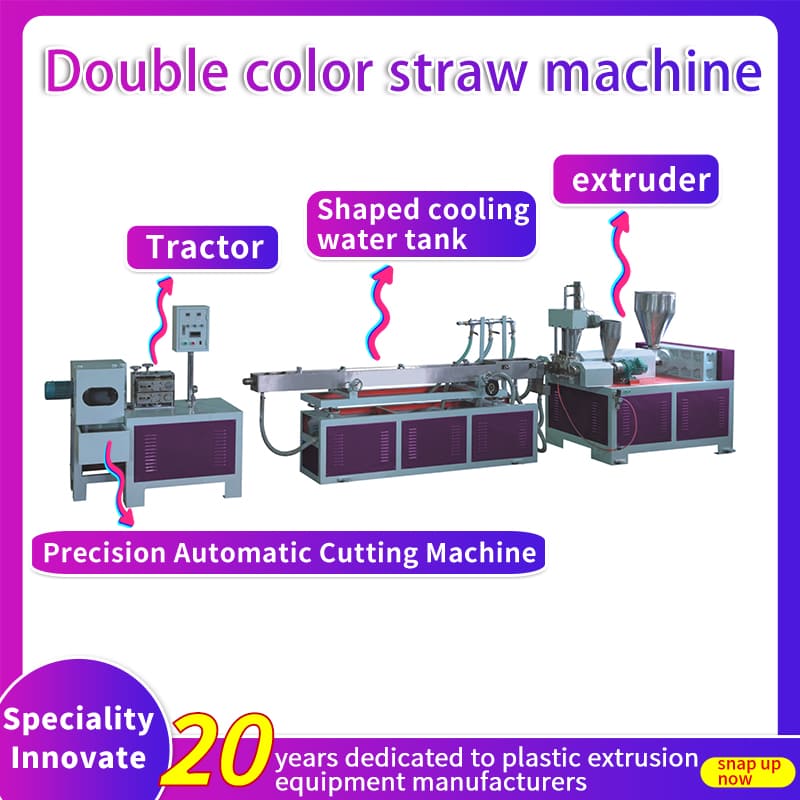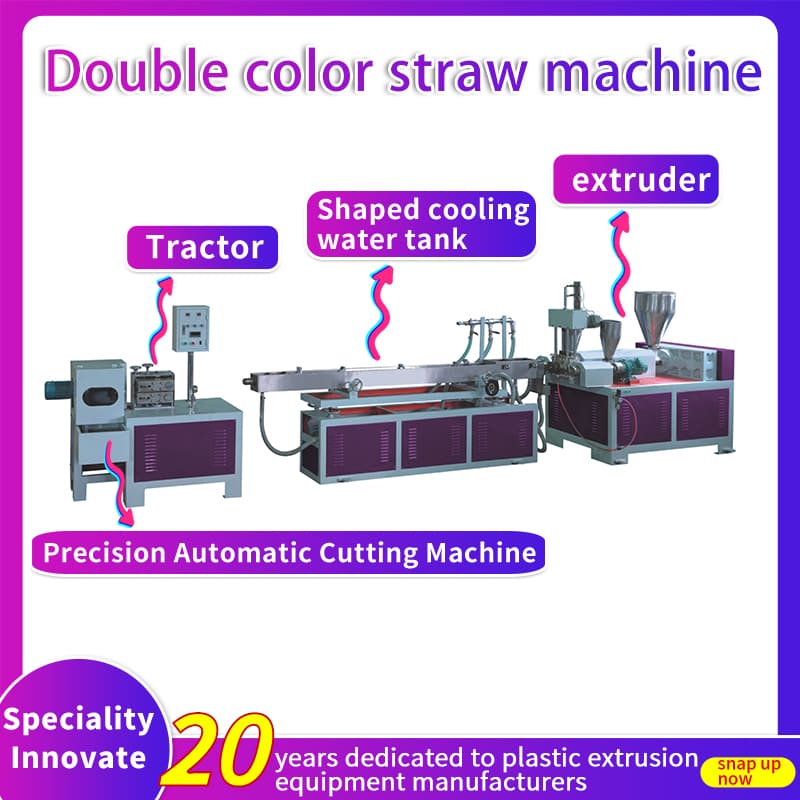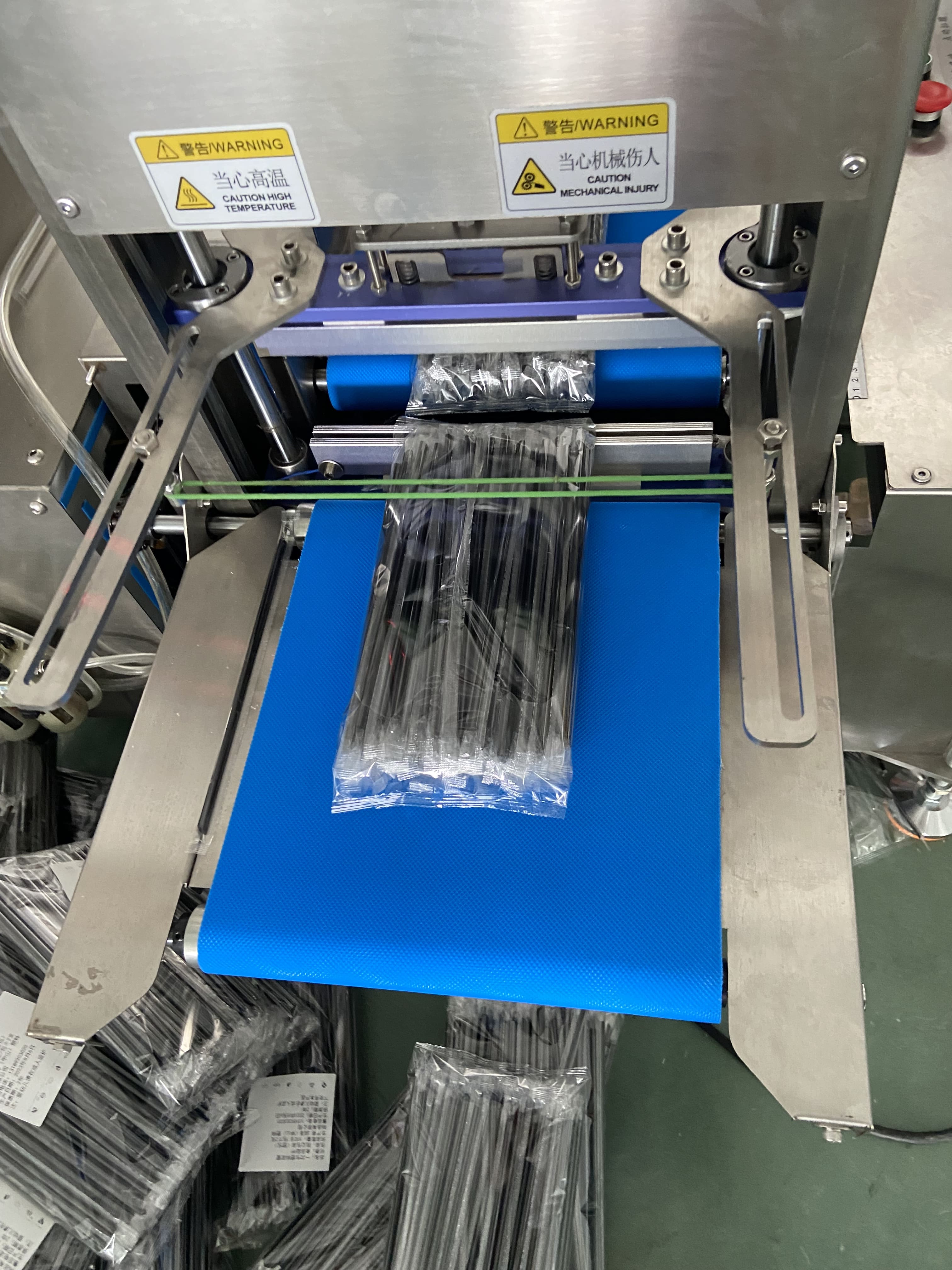
Revolutionizing Straw Production: Insights into Plastic Straw Extruder Technology
The production of plastic straws has been a cornerstone of the packaging industry for decades, providing a convenient and affordable solution for consumers worldwide. However, with the growing awareness of environmental issues and the impact of single-use plastics, the industry is undergoing a significant transformation. Plastic straw extruder technology, while still widely used, is facing challenges from more sustainable alternatives. This article delves into the intricacies of plastic straw extruder technology, its benefits, limitations, and the emerging trends in sustainable straw production.
Introduction to Plastic Straw Extruder Technology
Plastic straw extruders are specialized machines designed to produce plastic straws from raw materials such as polypropylene (PP) or polyethylene (PE). The process involves several key stages:
Material Preparation: Plastic raw materials are fed into the extruder in the form of granules or powder.
Melting Phase: The material is heated and melted, transforming it into a viscous state.
Extrusion Stage: The molten plastic is pushed through a die to form the desired shape of the straw.
Cooling and Cutting: The extruded straw is cooled and cut to the required length.
This technology allows for high-volume production with consistent quality, making it suitable for large-scale manufacturing.
Benefits of Plastic Straw Extruders
Despite the environmental concerns associated with plastic straws, plastic straw extruders offer several advantages:
Cost Efficiency: Plastic extrusion is generally cheaper than alternative molding methods, making it a cost-effective option for mass production.
Flexibility and Customization: Plastic straw extruders can produce straws in various sizes, shapes, and colors, offering flexibility in product design.
Reliability: These machines are designed for continuous operation, reducing the risk of inventory shortages and facilitating 24-hour manufacturing.
Challenges and Limitations
The primary challenge facing plastic straw extruders is the environmental impact of the products they produce. Single-use plastic straws contribute significantly to plastic pollution, with millions ending up in oceans and landfills each year. This has led to a global backlash against plastic straws, with many countries implementing bans or restrictions on their use.
Moreover, the production process itself has environmental implications, including energy consumption and greenhouse gas emissions. While plastic straw extruders are efficient in terms of production costs, they require significant amounts of energy to operate, contributing to carbon emissions.
Emerging Trends in Sustainable Straw Production
In response to the environmental concerns associated with plastic straws, the industry is shifting towards more sustainable alternatives. Two key trends are the development of biodegradable straws and the use of straw extrusion technology for eco-friendly materials.
Biodegradable Straws
Biodegradable straws are made from materials such as polylactic acid (PLA), which is derived from renewable resources like cornstarch or sugarcane. PLA straws are biodegradable and compostable, offering a more environmentally friendly alternative to traditional plastic straws.
The production of PLA straws involves a similar extrusion process to plastic straws, but with some key differences:
Material Preparation: PLA pellets must be dried to remove moisture before extrusion.
Melting Phase: PLA is melted at a temperature between 180-200°C.
Extrusion Stage: The molten PLA is extruded through a die to form the straw.
Shaping and Cooling: The extruded PLA is shaped and cooled to maintain its form.
Straw Extrusion Technology for Eco-Friendly Materials
Straw extrusion technology is not limited to plastic or PLA. It can also be used to produce straws from other sustainable materials such as paper, seaweed, or cornstarch-based bioplastics. This versatility allows manufacturers to tailor their products to meet specific environmental standards and consumer preferences.
Benefits of Sustainable Straw Production
The shift towards sustainable straw production offers several benefits:
Environmental Sustainability: Biodegradable straws reduce plastic waste and minimize environmental impact.
Customization: Straw extrusion technology allows for customization in terms of size, shape, and material, making it adaptable to different market needs.
Cost-Effectiveness: While the initial investment in sustainable straw production may be higher, long-term cost savings and competitive advantages can be significant.
Challenges in Sustainable Straw Production
Despite the advantages of sustainable straw production, there are challenges to overcome:
Higher Initial Costs: Investing in sustainable straw production technology can be more expensive than traditional plastic straw extruders.
Material Limitations: Some biodegradable materials may not offer the same durability or performance as plastic straws, affecting consumer acceptance.
Environmental Impact of Bioplastics: While bioplastics like PLA are biodegradable, their production can have a significant environmental footprint due to land use and resource extraction.
Conclusion
Plastic straw extruder technology has been a cornerstone of the packaging industry for decades, but it faces significant challenges from environmental concerns and emerging sustainable alternatives. As consumers and governments increasingly demand eco-friendly solutions, the industry is shifting towards biodegradable and compostable straws made from materials like PLA.
While sustainable straw production presents opportunities for reducing plastic waste and promoting environmental sustainability, it also comes with challenges such as higher initial costs and material limitations. As technology continues to evolve, it is likely that we will see further innovations in straw extrusion technology, enabling the production of more sustainable, customizable, and cost-effective straws that meet both consumer needs and environmental standards.







